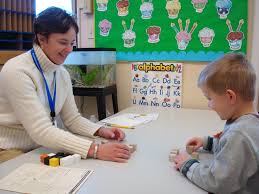By: Angy Talbot (EFCE Blog Writer)
All children go through developmental stages – typical and expected changes in the areas of language, cognitive, physical, and social and emotional development. These stages build upon one another, and children progress through each phase. A developmental milestone is a skill or ability that a child achieves by a certain age . For example, one developmental milestone is learning to crawl. Most children learn this skill or meet this developmental milestone between the ages of 7 and 10 months. Milestones develop in a sequential fashion. This means that a child will develop some skills before he or she can develop new skills. Children begin to babble or make sounds before they say their first word. Each milestone that a child acquires builds on the last milestone developed.
Children develop skills in five main areas of development:
1. Cognitive Development
This skill is the child’s ability to learn and solve problems. For example, this includes a two-month old baby learning to explore the environment with hands or eyes or a five-year old learning how to do simple math problems.
2. Social and Emotional Development
This skill is the child’s ability to interact with others, including helping themselves and self-control. Examples of this type of development would include: a six-week old baby smiling, a ten-month old baby waving bye-bye, or a five-year old boy knowing how to take turns in games at school.
3. Speech and Language Development
This skill is the child’s ability to both understand and use language. For example, this includes a 12-month old baby saying his first words, a two-year old naming parts of her body, or a five-year old learning to say “feet” instead of “foots.”
4. Fine Motor Skill Development
This skill is the child’s ability to use small muscles, specifically their hands and fingers, to pick up small objects, hold a spoon, turn pages in a book, or use a crayon to draw.
5. Gross Motor Skill Development
This skill is the child’s ability to use large muscles. For example, a six-month old baby learns how to sit up with some support, a 12-month old baby learns to pull up to a stand holding onto furniture, and a five-year old learns to skip. (Minnesota Department of Education)
Early years are the foundation for growth and development. Children are constantly learning, right from birth.
How can you help your child meet these developmental milestones?
• Give your child lots of love and attention. No matter what a child’s age, holding, hugging, and listening are important ways to show your child they matter.
• Interact with your child by talking, singing, playing, eating, and reading with your child. Your child will grow up feeling special and important to you. You will also learn a lot about your child’s interests and skills.
• Read, read, and read. Research has shown that children who are read to by their parents have a larger vocabulary than other children. Reading also provides children with new perspectives about the world we live in.
• Learn some simple parenting skills for helping your child to learn how to interact with others and manage feelings.
• Establish routines with your child from eating to bedtime.
• Limit TV time and video time to no more than 1-2 hours of educational viewing per day for children over 2 years old.
• Ask for help when you need it from your family, friends, partner and your child’s doctor or nurse practitioner. Parenting is wonderful but it is not always easy.
Does your child meet the developmental milestones?
Here is a list of Developmental Milestone resources including charts and websites, which can be used to track and check your child’s development:
Minnesota Department of Health
http://www.health.state.mn.us/divs/cfh/program/cyshn/milestone.cfm
Center of Disease and Control
http://www.cdc.gov/ncbddd/actearly/milestones/index.html
Help Me Grow – Is Your Child On Track?
http://helpmegrowmn.org/
PBS – The ABC’s of Child Development
http://www.pbs.org/wholechild/abc/



